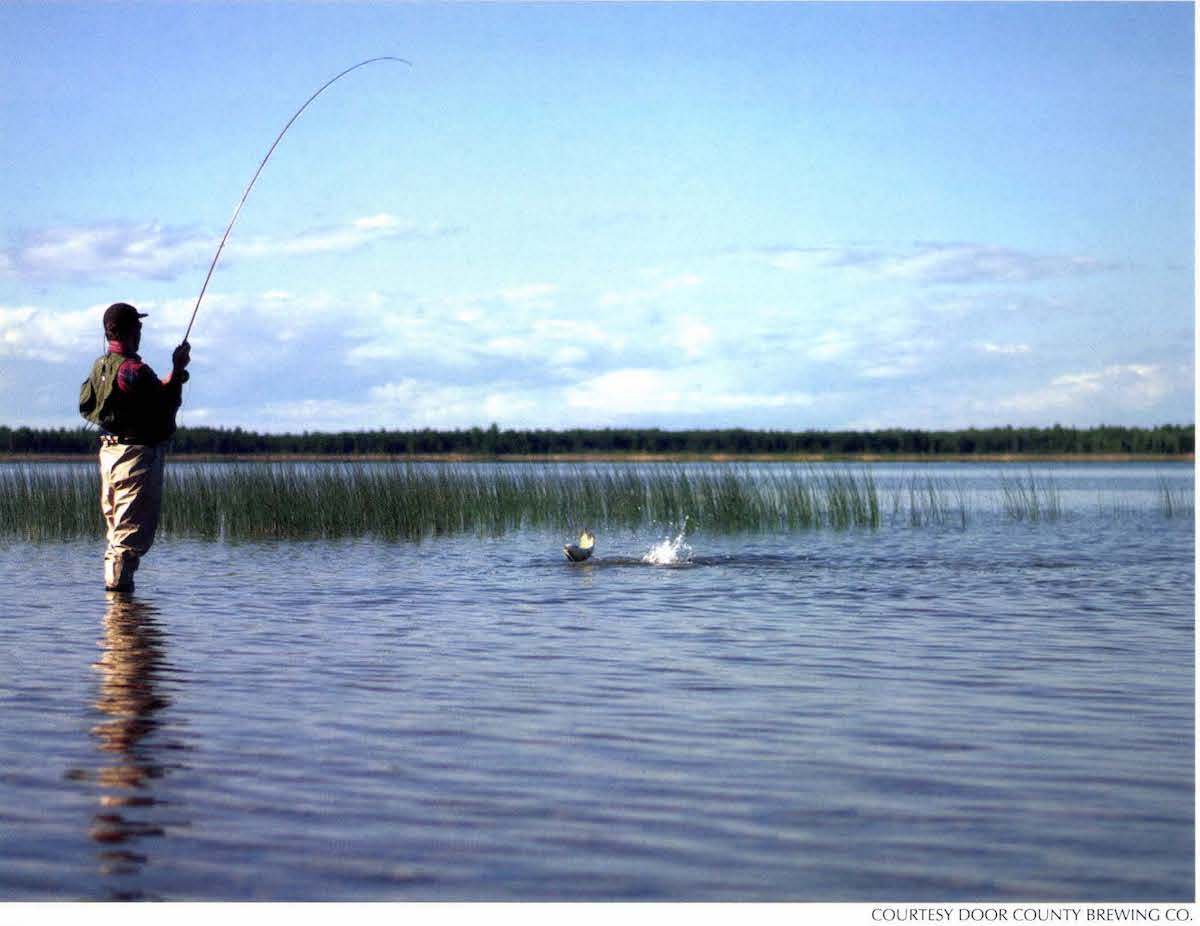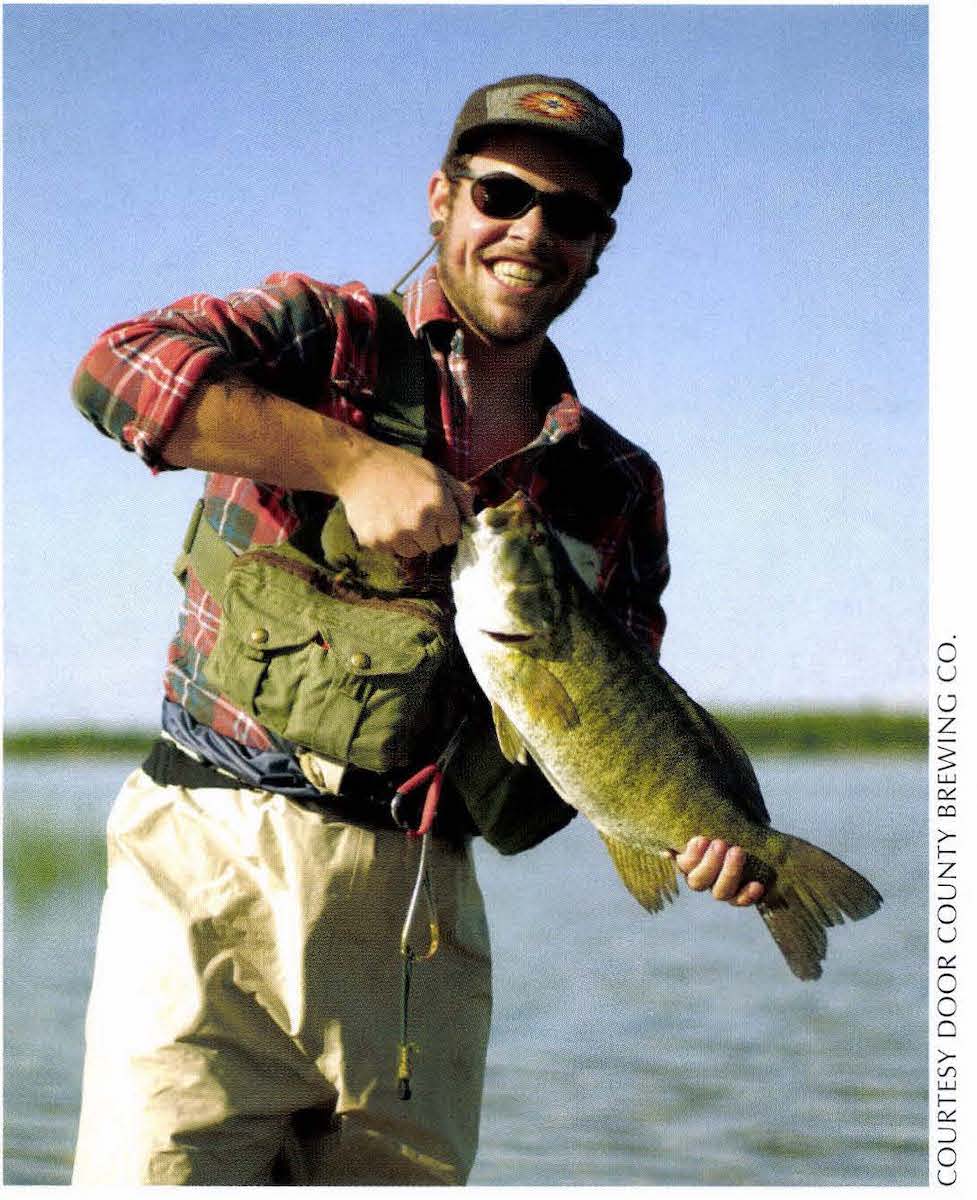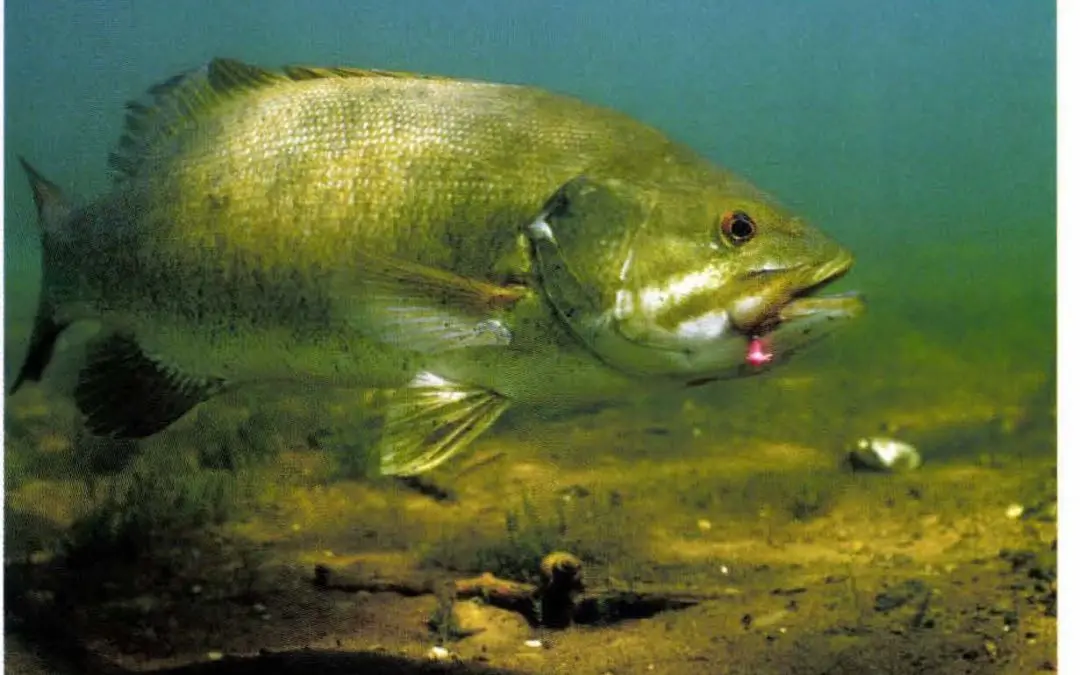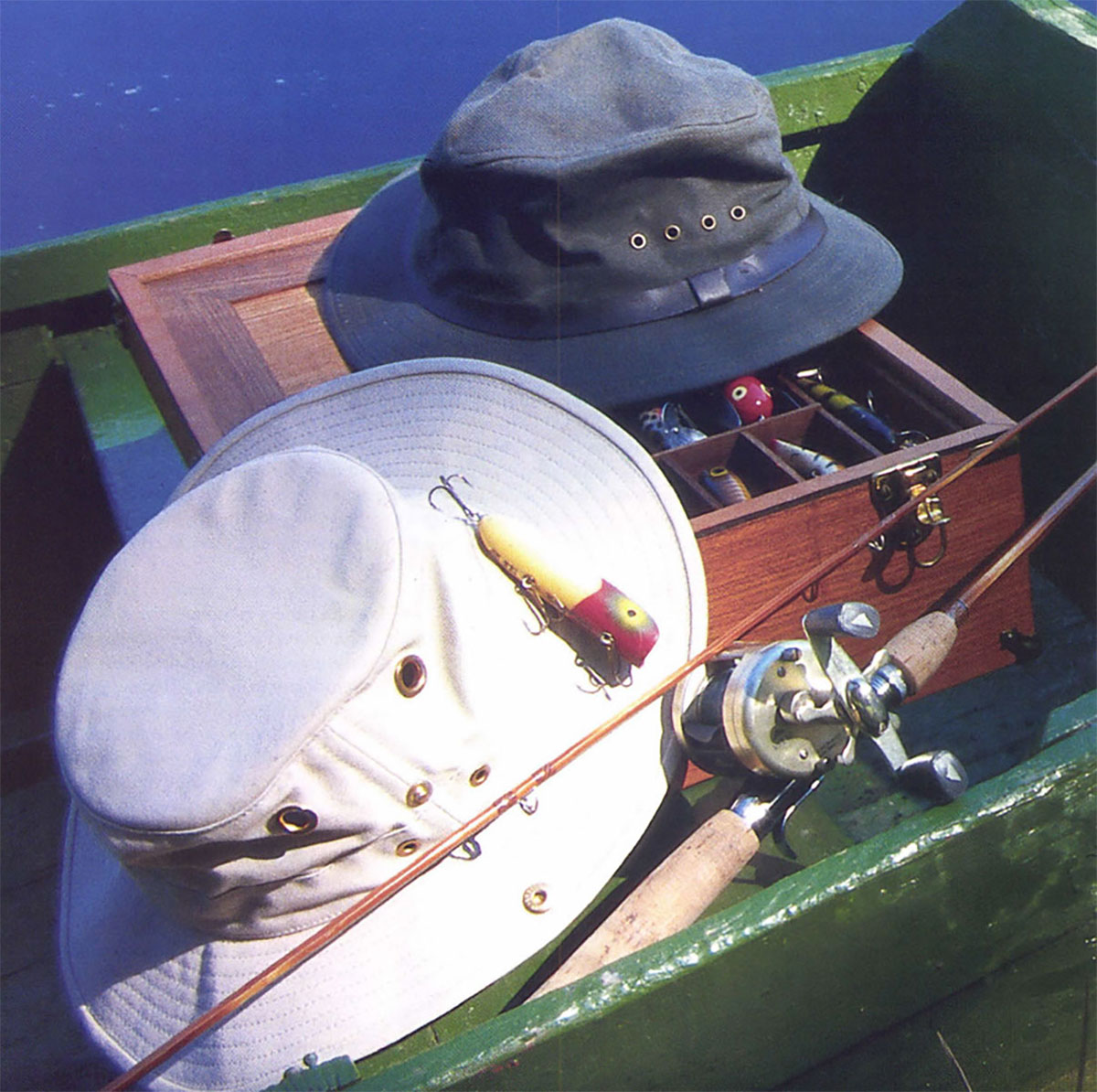Fishing the Bay, you can’t help but feel you’ve been handed the keys to a private kingdom, where the smallmouth bass reigns supreme.
I should have gone to her, should have been there in her hour of need. I should have let her collapse in my arms and told her everything would be all right while the sobs poured out in convulsive, cathartic release. Her voice had quavered on the phone; she was clearly in extremis – vulnerable, exposed, alone.
“No, no,” she’d said, unconvincingly. “You don’t need to come. I’ll be fine.”
She’d been walking a large tract of woods and wandered too close to a goshawk’s nest. She heard a sound she couldn’t identity, looked up, and saw a winged apparition, its eyes like the fires of hell, falling from the sky. She ducked and covered, but not in time to prevent the gos from raking her skull.
The lacerations weren’t severe – the nurse practitioner in town had cleaned them up and sent her home with some antibiotic ointment – but the episode had left her emotionally flayed. She’d just moved here, her husband was away, I was the only person she knew….
Yes, I should have gone to her. It would have been the right and noble thing to do. From where I was standing, I could look across the bright water and see the birches and cedars beneath which her cottage was nestled – but at that moment no power on earth could alter the course I’d set for myself. The giant smallmouth were in, and I meant to feel their freakish weight on the end of my line.
My mind made up and my guilt swept under the rug, I stepped down from shore and slowly waded into the Bay of Pigs.
I had rum and a dead man to thank for my treasure map. Maybe 20 years my senior, Dave was a summer neighbor. One balmy July evening he hailed me across our yards.
“Come on over,” he called. ‘I’m making daiquiris.”
Dave knew his way around the construction of a proper cocktail. His daiquiris were paradigms of tart-sweet simplicity – white rum, lime juice, superfine sugar, ice – and they went down as silkily as hookers in Havana. Pretty soon our tongues were wagging, and I started blathering about an upcoming trip to Ontario’s Lake of the Woods.
“Fly fishing for smallmouth bass,” I gushed. “It doesn’t get any better than that.”
A dreamy look came over Dave’s face, a look not entirely attributable to the rum.
“Fly fishing for smallmouth,” he said, wistfully. “God, I haven’t done that in years. I used to wade __ Bay with my fly rod and catch smallmouth like you wouldn’t believe.”

This intelligence pierced the alcohol haze like a laser beam. Suddenly, I was all ears. I was familiar with the bay he’d named, much of it a vast marl flat dotted with beds of hardstem bulrush. It didn’t look like smallmouth water – there were hardly any rocks, for one thing – and I’d never heard of anyone fishing for bass there.
” _ Bay?” I said, trying to sound casual but lusting for further details. “Really?”
“Oh, yeah,” Dave replied, reaching into the bucket for more ice. “They move in from Lake Michigan to spawn. There’s a window – late May, early June – when they’re in the shallows and you can get at them with flies. After that they drift back to deep water.”
Needless to say, this information went directly to a high-priority memory file, hot-flagged with the notation “Check out next year.”
Which I did. The daiquiris may have lubricated the mechanism but Dave hadn’t been feeding me a line. The first time I fished what I’ll henceforth refer to as the Bay of Pigs, I caught what was then, by a wide margin, the biggest smallmouth of my life.
She was cruising and feeding, and at distance I assumed that whatever was making those emphatic swirls had to be a carp, great herds of which (somehow “schools” seems too civilized) roam there. Nothing that big could be anything else. But when I eased closer and she arrowed up to eat something, probably a mayfly nymph rising out of the marl, I went cotton-mouthed, rubber-kneed – all the usual responses when you realize you’re in the presence of something outrageously desirable that, if you don’t mess it up, you have a chance to attain. Thankfully it was an easy cast and, after dropping the Woolly Bugger in the general vicinity and twitching it once or twice, the bass took without hesitation.
It was one of those fights you don’t retain much memory of – and you can’t honestly say you enjoy because you’re fixated, to the exclusion of all other thought and stimuli, on just landing the damn fish. When she came to hand and I could see her out of the water, her dimensions were even harder to wrap my mind around. It was as if she were a member of a mutant race, a race unknown to ichthyological science. She superficially resembled the smallmouth I was familiar with – glowering red eyes, barred olive flanks, mouth like coarse-grit sandpaper, the basic shape and fin arrangement characteristic of the sunfish family – but she was enormous. She looked more like some kind of snapper or grouper than a smallmouth bass.
In a perfect world, I would have showed up at Dave’s door with a bottle of Bacardi to thank him for leading me to the smallmouth of my dreams. But the world isn’t perfect: A few weeks after we’d shared those daiquiris, Dave lost control of his car on a rural highway and plowed into a stand of trees.
I raised more than a few toasts to his memory – and hoped like hell that in acting on his tip I hadn’t exposed my soul to the same lethal karma.
Fishing the Bay of Pigs, I can’t help but feel I’ve been handed the keys to a private kingdom. It’s a little over a mile wide and a little over two-and-a-half miles long, much of it’s wadable – and yet the vast majority of the time I either have it all to myself or the only other angler in sight is one of the friends I fish it with. I could speculate endlessly on why this is the case, but the bottom line is that I’m not complaining.
Of course, anglers famously crave solitude – it’s central to the Waltonian mythos – and that’s a big part of the bay’s appeal. But an even bigger part, I think, is the feeling of freedom that this solitude engenders. All that water, and no limits beyond the top of your waders. Then there’s the oceanic vista yawning open past the bay’s mouth, filling the sails of your imagination, awakening your inner Odysseus.
You can understand, then, why we feel a bit proprietary about it – and why, when we discovered that intruders from the Great Unwashed were abusing it (at least by our lights ), we did something completely out of character. We took action.
My longtime friend Andy Cook had called to report that the bass were in – but when we waded a choice stretch of shoreline, we found a lot of empty water and very few fish. Something was rotten in Denmark, and eventually we sniffed it out: A pair of tournament anglers had come screaming into the bay a day or two earlier in their bass boat, cherry-picked their limits, and gone screaming out again.
Apparently, the Bay of Pigs wasn’t quite the secret we thought it was.
The kicker was that the tournament was headquartered an absurd distance away – Andy and I figured that even at bass boat speeds it had to be close to a two-hour ride – so no matter how healthy the fish were it was ludicrous to think they’d find their way home. They might as well have been hauled overland and dumped into a different body of water. It was legal but ruinous, so I got the DNR fish manager on the phone and started chewing. My argument was that the smallmouth in this bay comprise a discrete, geographically isolated population that simply can’t support the removal of its large females – the engines of its reproductive capacity and the vessels of its best genetics.
Not that I put it that eloquently, but I made my point. Within a week or two, the DNR issued an emergency rule limiting the distance tournament anglers could travel to fish. There were howls of protest from all the usual suspects – the people who organize and make money from fishing tournaments, basically – but as far as I know, the rule’s still in effect.
And it’s been a long time since anyone’s seen a bass boat on the Bay of Pigs.
This isn’t technical fishing, but it isn’t as easy as you might think. Yes, we do cast to bass that are on beds – it’s often the only opportunity they give us – but we take pains not to abuse the privilege. Our policy is strictly “one and done,” with any landed bass immediately declared off-limits and all fish released within a few yards of where they were hooked.
While the occasional bed stands out like Brooks Brothers in a biker bar, the majority are all but indistinguishable from the black, intricately filigreed mats of emerging bulrush they’re built on, an interesting adaptation to the relative paucity of boulders, logs and other bassy “structure.” It’s very much a flats-fishing scenario; you learn to look less for the fish themselves than for clues to their presence. In that ever-shifting matrix of light and shadow – windows of emerald-tinted transparency streaked with ribbons of turquoise incandescence – the subtlest difference can be freighted with meaning.
Sadly, surface presentations are a losing proposition here. To catch these fish you need to get down where they live with Woolly Buggers, Clousers, Coneheads, various weighted crayfish patterns – you get the picture.

Ben McMahon fly-caught this big smallmouth in only a few feet of water from Lake Michigan, which to a small coterie of anglers is one of the best smallmouth fisheries in the country.
In other words, you need to place a pretty heavy fly on a pretty small target. There’s always wind to contend with – like I said, this is flats fishing – and to further complicate matters these inshore waters are affected by a natural phenomenon called a seiche, which behaves superficially like a tide, but as a function of differential pressures created by offshore wind and wave action, is much more erratic and unpredictable. (There are no “seiche charts. “) The kicker is that the seiche can change any number of times over the course of a single day or even a few hours, running out, then in, then out again , and so on.
It’s not at all uncommon to have the wind and waves punishing you from one direction while the seiche is running briskly in the other. Making a good cast in these conditions not only requires tight loops, high line speed, and all the other gambits from the Lefty Kreh playbook (including knowing when to duck) but a working knowledge of vector mechanics and non-Euclidean geometry.
So yes, you need to have some skills, although frankly we don ‘t do it for the challenge. We don’t do it for the fight, either. Oh, these fish’ll usually give you a crashing leap or two, some heavy threshing on the surface, and a few hard pulls, but they don’t display remotely the same conviction or resolve of a midsummer smallmouth. They’re like boxers in the early stages of training, showing you just enough to give you a glimpse of what they’re capable of when their stamina ramps up to match their punching power.
No, the reason we do it, the reason we’re powerless to resist the Bay of Pigs’ siren song, is that for a couple of weeks every spring it affords us the chance to stand in the water and catch smallmouth bass that are just crazy, silly, stupid big on flyrods. That’s right: It’s all about the size. I suppose this could be the expression of some primal urge deeply encrypted in our DNA – but I think it’s equalIy likely that it’s yet another manifestation of our eternal adolescence, burbling from the same dubious spring that makes us incapable of not gawking like halfwits when a terrific set of knockers heaves into view.
On the Bay of Pigs, you can find every variety of swine.
Speaking of farm animals, there was the time I waded out toward a large, oblong, faintly ochreous rock that appeared to be about a third out of the water. I couldn’t remember seeing it before, but it’s not uncommon for ice to re-arrange the furniture in these parts, so it didn’t strike me as unusual. The rock seemed to be creating some curious-looking ripples, too, but I figured it was just another of those perplexing seiche events.
As I waded closer, though, stripping line in preparation to cast, the rock appeared to flex. Then it appeared to flex in the opposite direction – and I realized that the rock was a massive carp, semi-beached in the skinny water. I’ve caught carp that pushed 30 pounds, but this fish was an order of magnitude larger. It looked almost mammalian – as if, in the middle of attempting to make an evolutionary leap, the carp had high-centered itself.
Now, though, it was ready to return to its natural element. While I maintained a respectful distance, it wallowed in the marl, struggling to break free and attain enough buoyancy to swim. It finally slouched away, a porcine beast trailed by its cloud of natal mud.
The last time I fished the Bay of Pigs, I arrived around nine in the morning, hoping to take advantage of the midday sun. The funky old cottages perched above the water – glorified shacks, really – were still shuttered up; the only traffic on the bay was a pair of mute swans, floating cloudlike along the far shore.
I was stringing my rod when a compact pick-up crunched to a stop behind my Jeep. A youngish guy wearing Clark Kent glasses jumped out and breathlessly asked, “Are you coming or going?”
I wanted to say, “Relative to what?” but I just said, “I’m getting ready to go fishing, if that’s what you mean.”
“Okay!” he said. Then, faster than I imagined possible, he was wadered up and, spinning rod in hand, literally sprinting through the shallow water along the shoreline – in precisely the direction I’d planned to go, of course.
A fishing companion once described my demeanor during a run of bad luck as “stoic, but pissed.”
Yep.
But what the hell. I knew I’d find bass; I’d just have to cover more water and hunt a little harder, is all.
That’s pretty much how it went down. An amoeboid shadow on the bottom of a deep trough looked intriguing, and when I dropped a crayfish pattern on it a portion of the shadow detached. The fly came to a stop at the same time and when I reared back, I felt that glorious throbbing weight, immovable but not quite, that to me, is the money shot. The bass eventually lurched out of the water, shook its head, and threw the hook, but I’d gotten what I’d come for.
The next fish was in a more conventional spot, a bed scalloped into the edge of last year’s broken-down bulrushes. The fight was a twin to the first: That lovely sensation of mass when the line came tight, some bucking and thrashing, and ultimately a long-distance release.
Then I spent a long time working what looked like a bed without getting a nudge. I couldn’t see anything that I could positively ID as a bass, either, but when I waded over, there she was, her red eye staling me down, her mouth set in that determinedly humorless line. Message received: She wasn’t about to waste her energy on anything so trifling as a crawdad.
I endured a dry spell after that, making an ambling clockwise loop across a goodly section of the flat, playing connect-the-dots with the scattered bulrush stands but coming up empty. The sky above was sunny, but a cottony layer of fog was building on Lake Michigan, and if it pushed into the bay (as I suspected it would) I’d have to pull out. There was a bulrush stand all by itself beyond a swale of deeper water, and after tiptoeing across to get in casting range I spotted what looked like a bed. With the water lapping at the top of my waders I didn’t dare move any closer, so I took aim and lobbed the crayfish. It plunked down exactly where I wanted it to …
Unlike the others, this bass stayed hooked. She was one of those fish you stare at numbly for several seconds before shaking your head in utter disbelief and mumbling some profundity like “Jesus Christ.”
I clambered ashore just ahead of the fog. By the time I’d peeled off my waders and broken down my rod, you couldn’t tell where the land ended, or where the water began. Clark Kent had already taken off.
 The brilliant fisherman, instructor, and public speaker Lefty Kreh is perhaps the best known, most respected, and most beloved angler in the world today. My Life Was This Big takes readers on an angling journey through the last half century, when water was big and fishermen were bigger. But, despite all that’s changed since the fifties, when Lefty began his career as a professional fly fisherman and writer, fishing is still just fishing.
The brilliant fisherman, instructor, and public speaker Lefty Kreh is perhaps the best known, most respected, and most beloved angler in the world today. My Life Was This Big takes readers on an angling journey through the last half century, when water was big and fishermen were bigger. But, despite all that’s changed since the fifties, when Lefty began his career as a professional fly fisherman and writer, fishing is still just fishing.
In My Life Was This Big, Lefty shares his tales of fishing expeditions with Fidel Castro and Ernest Hemingway, as well as solo battles with some of the scrappiest, most elusive fish in the world. Lefty also takes the reader through the development of his world-famous “Deceiver” fly style, and takes on the issue of conservation through catch-and-release. These timeless, often hilarious stories will put you in the boat with Lefty—and even teach you a thing or two about fly fishing along the way!
This is a glimpse into the heart and soul of Lefty Kreh—a man who has written for nearly every outdoor magazine in the United States; a man who has fished some of the remotest parts of the globe; and a man whose books and articles have taught thousands of people his techniques for hooking and landing more fish. For fans both young and old, these are Lefty’s stories. Buy Now




